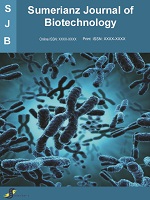Sumerianz Journal of Biotechnology

Online ISSN: 2617-3050
Print ISSN: 2617-3123
Quarterly Published (4 Issues Per Year)
Journal Website: https://www.sumerianz.com/?ic=journal-home&journal=32Archive
Volume 3 Issue 10 (2020)
Effect of Supplementing Cassava with Okara on Biscuit Quality
Authors : Makinde Folasade Maria ; Abolade Esther Olaitan
DOI : doi.org/10.47752/sjb.310.99.105
Abstract:Okara is a nutritious by-product of soy milk industry; however it is discarded as industrial waste because it is perishable and other uses for it have not been fully identified. The feasibility of utilization of okara in food formulations was investigated. Five blends of composite flour were prepared by combining cassava flour with 10% to 50% of okara flour, respectively. The 100% cassava flour served as control. The functional and pasting properties of the flour blends as well as the chemical and sensory properties of biscuit samples were determined. Statistically significant (p≤0.05) difference in functional properties was observed between cassava flour supplemented with different levels of okara. The pasting properties showed that peak and final viscosities decreased with increase in level of okara flour in the blend. The biscuit samples had protein (4.7-11.9%), ash (1.63-2.17%), crude fibre (17.13-20.38%), fat (17.9- 23.4%), carbohydrate (34.9-53.0%) and energy (349.8-363.5 Kcal/g). Anti-nutritional components (oxalate, phytate and tannin) were significantly affected by inclusion of okara in the formulation. The sensorial characteristics of biscuits prepared from cassava and okara showed significant difference (p≤0.05) compared to the control. Cassava flour could be supplemented with okara flour up to 20% level in the production of biscuits with improved nutritional quality without affecting sensorial acceptability. The results from this study could be adopted by indigenous food industries that want to take the functional and nutritional advantage of okara flour to supplement starchy food ingredients.
Potentials of Neglected Wild Foods: Nutritional Composition of a ‘Plant Meat’ (Nyam Ngub) Prepared From Wild Edible Orchid Tubers
Authors : Dobgima John Fonmboh ; Richard Marcel Nguimbou ; Fokunang Charles Ntungwen ; Divine Bup Nde
DOI : doi.org/10.47752/sjb.310.93.98
Abstract:The powders of a traditional food (Nyam ngub) and two wild varieties of orchid tubers (Ateehteu and Lamsie) were studied for the chemical composition (proximate and mineral composition) and functional properties (water, oil, ethanol absorption capacities, solubility index and swelling power). The tubers were collected from Kedjom Ketingoh (5o 58’N and 10o 19E) in the Northwest Region of Cameroon from July to September 2017. The Nyam ngub was prepared following the traditional method used by local processors in the field. Nyam ngub and tubers were separately sliced, dried for 96 h at 45 °C, ground and sieved to obtain powders used for the analysis. For 100g DW, the mean crude protein, starch, total sugars, soluble sugars, total lipid, crude fibre, vitamin C, calcium, iron contents and energy values for Ateehteu, Lamsie and Nyam ngub were (1.93; 3.50; 2.59)mg, (6.51; 4.48; 4.26)g, (14.34; 15.07;13.08)g, (1.07; 1.06; 1.05)g, (2.45; 2.93; 2.41)g, (4.02; 5.22; 4.88)g, (8.38; 5.69; 5.93)mg, (58.02; 181.86; 693.03)mg, (2.78; 24.65; 16.02)mg and (60.58; 63.09; 53.73) Kcal. The mean water, oil and ethanol absorption capacities for Ateehteu and Lamsie were (7.29; 9.10) g/g, (2.60; 3.21) g/g and (1.91; 2.28) g/g and solubility index was (44.38; 59.63) %. The results showed that Nyam ngub could therefore represent a rich traditional food that can provide nutrient diversity in diets, served as food for diabetics and had a promising potential as nutraceuticals and functional foods.



